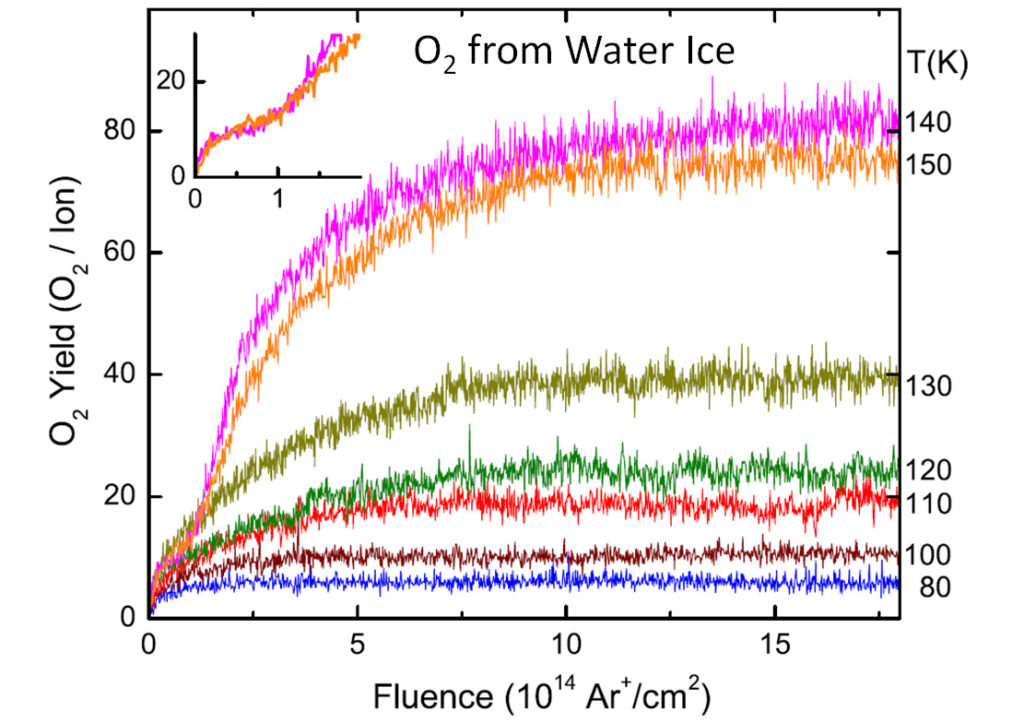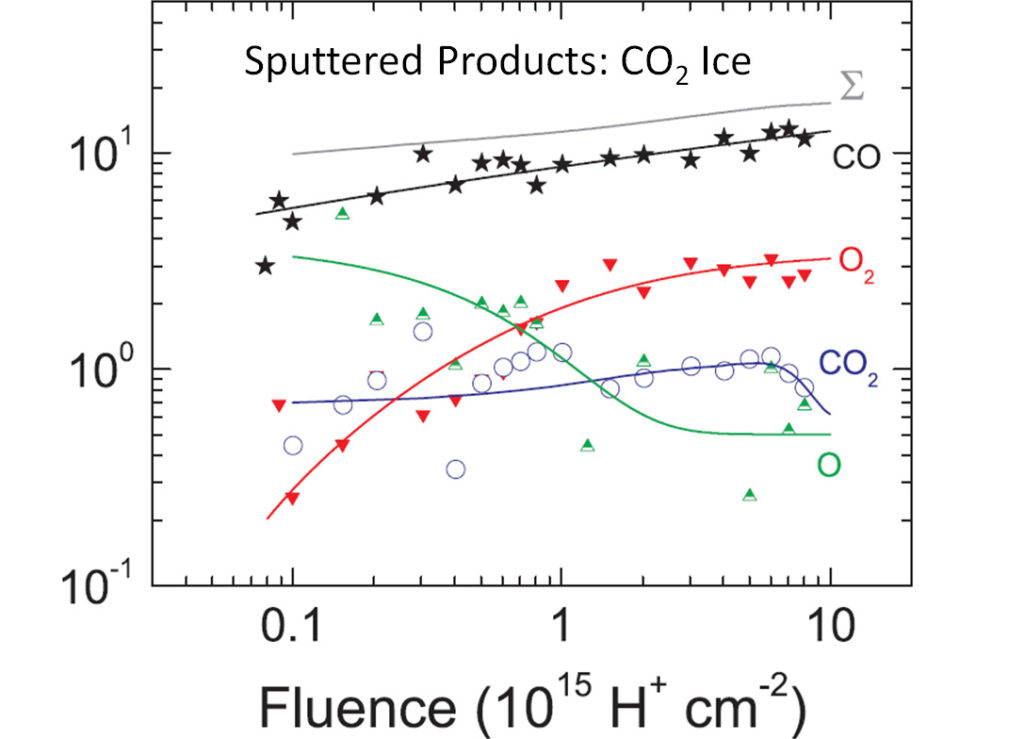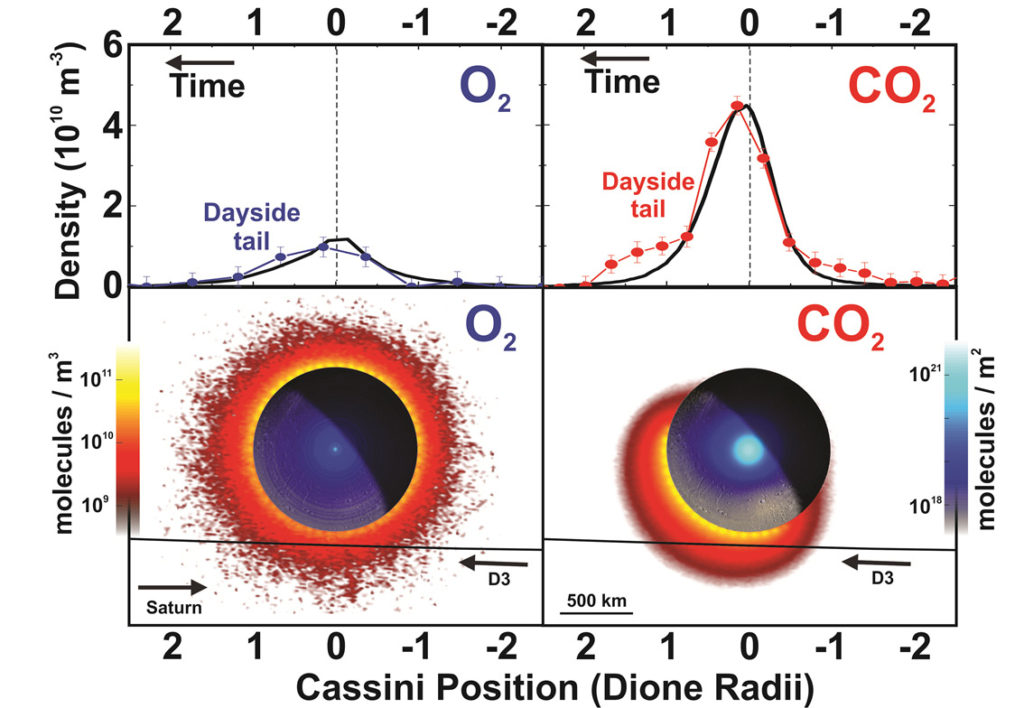Surface-Exosphere Connection on Icy Satellites
Key Questions
“Radiolytically sputtered” O2 and CO2 exospheres from reactions of surface H2O ice with carbon-bearing ‘organic contaminants’ are common at the Saturnian (Figure 1) and Jovian icy moons. However some icy Ocean Worlds such as Europa have even more diverse surface constituents, possibly including complex oceanic organics and salt-laden material erupted through the icy crust, as well as gaseous and particulate cryovolcanic plume fallout (Figure 2).
What exospheric molecules do these complex ices ‘give off’ when sputtered by Jupiter’s magnetosphere, and in what amounts? What is the dependence on surface composition and irradiation parameters, such as particle energy, dose, and (ion) mass? Even though these questions are essential to understanding exospheric origins at icy moons, and are of rapidly escalating importance to NASA’s research and space programs, they have not been quantitatively and systematically addressed in the laboratory.
Our Effort
Systematic experiments to shed light on radiolytic sputtering of complex molecular ices at solar system icy moons are a central objective of our research program. Co-condensation of water ice with both simple carbon-bearing species (e.g. CO2 and CH4), and more complex organics, allows us to simulate in the laboratory icy materials which may fallout and freeze, e.g., onto Europa’s surface near a plume. We are conducting mass spectrometer analysis of molecules ejected from these ices under charged particle irradiation (Figure 3 and Figure 4) to quantify processes (e.g., radiation chemistry and preferential sputtering) connecting surface and exospheric composition at irradiated icy worlds.

Figure 3

Figure 4


